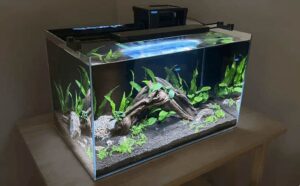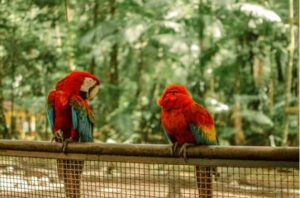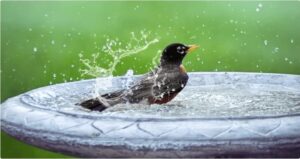A bird bath is a man-made water feature designed to provide birds with a place to drink, bathe, and cool off. These shallow basins filled with water can enhance garden aesthetics while also serving as an essential resource for birds, particularly during hot weather and drought periods. Bird baths come in a variety of forms, from decorative garden ornaments to natural rock depressions, and they play a vital role in supporting local wildlife.

Importance of Bird Baths
Bird baths attract various bird species, offering them a reliable water source year-round. This is especially crucial in urban environments where natural water sources may be scarce. By placing a bird bath in your garden, you can create a welcoming habitat for birds, encouraging them to visit and even nest nearby. Additionally, bird baths complement bird feeders, allowing birds to linger longer and increasing their chances of returning.
Types and Design Considerations
Bird baths come in many designs, including pedestal-mounted, hanging, and ground-level versions. They can be made from different materials such as concrete, ceramic, metal, glass, or natural stone. When selecting a bird bath, consider the following:
- Shallow Basin: The water should be no more than two inches deep to prevent drowning hazards.
- Gradual Depth Change: Birds prefer basins that gradually deepen from the edges towards the center.
- Open Surroundings: A bird bath should be placed in an open area to minimize the risk of predators like cats hiding nearby.
- Elevation: Raised bird baths on pedestals provide an added layer of safety.
- Water Movement: Running or dripping water attracts birds, making fountains or solar-powered pumps a great addition.
Materials and Construction
Bird baths can be crafted from various materials to match the surrounding landscape. Common choices include:
- Concrete: Durable and often molded with decorative patterns.
- Ceramic or Terra Cotta: Attractive but may require more frequent cleaning.
- Metal (Copper or Stainless Steel): Resistant to rust and weathering.
- Glass and Mosaic: Aesthetic but fragile.
- Natural Rock: Blends seamlessly with outdoor environments.
Some bird baths incorporate water recirculation systems, filters, and automatic refilling mechanisms to ensure a continuous fresh water supply. Solar-powered pumps are also an eco-friendly way to keep the water moving, making the bath more appealing to birds.
Accommodating Different Bird Species
Larger birds, such as geese and ducks, require more spacious bathing areas. Agricultural sprinklers or shallow pools in open fields can cater to their needs, particularly in urban areas where wetlands are limited.
Placement and Safety Tips
For maximum effectiveness, position the bird bath in a location where birds feel secure:
- Near Trees and Shrubs: This allows birds to escape quickly if they sense danger.
- Clear Surroundings: Ensure a two-foot clearance around the bath to prevent ambushes by predators.
- Gradual Entry Points: Adding stones, sticks, or textured surfaces can help birds gauge the water depth and enter safely.
- Away from Bird Feeders: To prevent contamination from bird droppings.
Maintenance and Hygiene
Regular upkeep is crucial for maintaining a healthy environment for birds. Key maintenance steps include:
- Frequent Water Changes: Replace water every few days to prevent stagnation and mosquito breeding.
- Cleaning: Scrub the bath with a brush to remove algae and debris. Non-toxic cleaners such as diluted vinegar or a small amount of bleach can be used occasionally.
- Preventing Mosquitoes: Use a water agitator, aerator, or natural mosquito control solutions like Bacillus thuringiensis israelensis (Bti) to stop larvae from developing.
Enhancing Your Garden for Birds
To make your bird bath even more attractive to avian visitors, consider incorporating native plants that provide food and shelter. Trees and shrubs offer safe perches, while berry-producing plants supply additional nourishment. Encouraging birds through thoughtful landscaping not only enhances your garden’s beauty but also helps control insect populations naturally.
Conclusion
A well-maintained bird bath is more than just a decorative feature—it is a lifeline for birds, promoting biodiversity and adding vibrancy to your garden. By selecting the right design, placing it thoughtfully, and ensuring proper maintenance, you can create an inviting oasis that benefits both birds and nature lovers alike.











